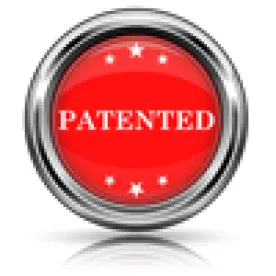In its 2013 decision in In re Morsa, the Federal Circuit vacated an anticipation rejection where “both the Board and the examiner failed to engage in a proper enablement analysis” to establish the enabling quality of the cited prior art reference. On remand, the USPTO Patent Trial and Appeal Board determined that the reference at issue was enabling, based largely on statements in Morsa’s patent application regarding the state of the art. In it’s recent decision in Morsa II, the Federal Circuit affirmed the rejection, over a vigorous dissent by Judge Newman.
The Rejection On Appeal
I have previously summarized the patent application at issue (U.S. patent application 09/832,440, directed to “Method and Apparatus for the Furnishing of Benefits Information and Benefits”), the rejected claims, and the cited prior art reference (the “PMA”). As noted in that article, the PMA was a press release regarding a web-based product that “allows caseworkers and consumers to ‘use the Web to screen themselves for benefits, services, health risks, or anything else an agency wishes to implement via its eligibility library.'” On appeal, Morsa challenged the finding that the PMA anticipated certain claims under 35 USC § 102.
The Enablement Issue
Morsa asserted that the PMA did not enable the methods of the rejected claims, arguing that “the PMA lacked specific disclosures of the structural components and features …, how these features and components were integrated together, and the process and steps through which the system progressed.” On remand, the Board held that Morsa’s application “made numerous admissions as to what one skilled in the art at the time of the invention would have known.”
For example, the Board found that the specification discussed that central processing units and memories were “well known to those skilled in the art,” that central processing units and memories were “used in conventional ways to process requests for benefit information in accordance with stored instructions,” that the system as described in the patent “can be implemented by any programmer of ordinary skill in the art using commercially available development tools . . . ,” and that “search routines for accomplishing this purpose are well within the knowledge of those of ordinary skill in the art.
Thus, the Board again upheld the examiner’s rejection of the claims at issue.
The Morsa II Decision
In Morsa II, the Federal Circuit affirmed the rejection in an opinion authored by Chief Judge Prost and joined by Judge O’Malley.
The majority rejected Morsa’s arguments that the information provided in the PMA was not enabling, agreeing with the Board’s finding that “the specification made clear that a skilled computer artisan would readily know how to use conventional computer equipment and how to program it; thus, only ordinary experimentation would be needed to make the claimed program.” Responding to one of Judge Newman’s points, the majority stated:
[W]e do not use portions of the patent specification as prior art, but instead affirm the Board’s use of one section in the specification solely as it relates to the knowledge of a person of ordinary skill in the art. There is a crucial difference between using the patent’s specification for filling in gaps in the prior art, and using it to determine the knowledge of a person of ordinary skill in the art. Here, the Board did only the latter. Mr. Morsa, amongst other things, admitted in the specification that the system as described in the patent “can be implemented by any programmer of ordinary skill …,” thus allowing him to avoid having to teach the public this very concept. Therefore, by using Mr. Morsa’s admissions, the Board simply held him to the statements he made in attempting to procure the patent.
Judge Newman’s Dissent
Judge Newman’s dissent took the majority to task for misapplying both the law of anticipation and the law of enablement:
I write to attempt to stabilize the law of “anticipation,” for the court confuses the laws of anticipation and obviousness, and the role of enablement as applied to prior art references.
Judge Newman reminded her colleagues that “the law [of anticipation] ‘requires the presence in a single prior art disclosure of all elements of a claimed invention arranged as in the claim,'” and that the required disclosure cannot be satisfied by taking “Official Notice” as to how databases generally function, as she says the Board did here. According to Judge Newman, such “Official Notice” was “insufficient to establish either inherent description or inherent enablement of the explicitly claimed subject matter.”
Judge Newman also criticized her colleagues for using Morsa’s specification as prior art. In particular, she drew a distinction between “[a]n inventor’s statement in the patent application that a particular step may be performed by procedures known to persons of skill in the field,” and a prior art disclosure of “that step in the context in which the inventor used it.” She emphasized that “[e]nablement of the prior art must come from prior art,” such that the question “was whether the subject matter of the press release is enabled by the description in the press release,” which it had not been shown to be.
Anything You Say …
In August I had the honor of participating in the AIPLA/USPTO Enhancing Patent Quality Roadshow, and spoke about “Best Practices for Drafting Quality Patent Applications.” One of the points our panel made is that writing a patent application can be like speaking up after you’ve been given a Miranda warning. While you may not have a right to remain silent, anything you say can and will be held against you in a court of law. I understand the distinction Judge Newman draws in her dissent, but I also understand the majority’s willingness to fill the gaps in the cited prior art with Morsa’s “admissions” regarding the state of the art.




 />i
/>i
